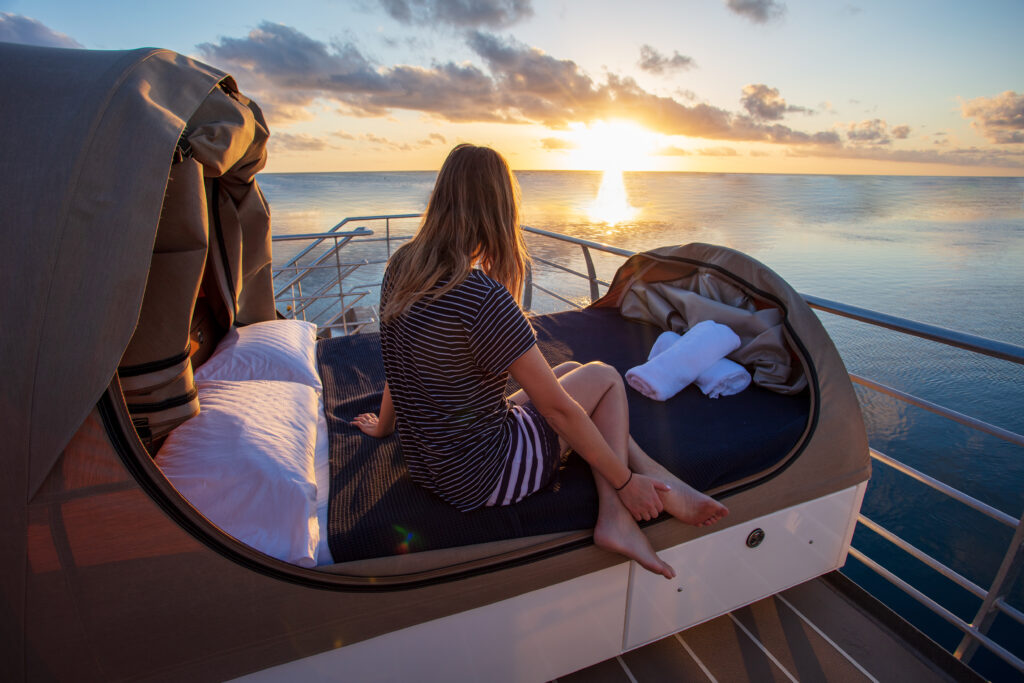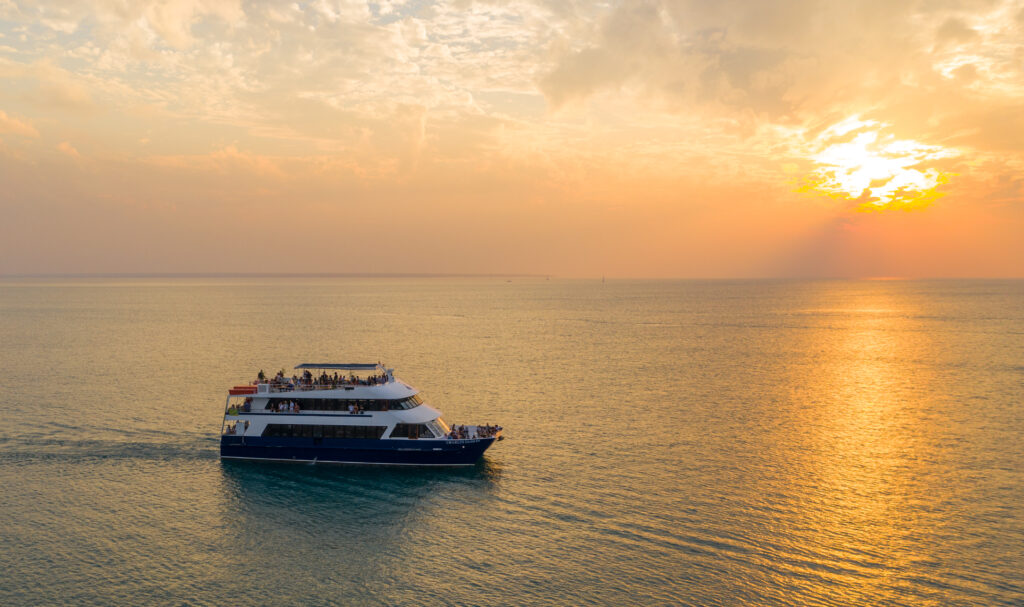These simple tips and tricks will have you snapping better photos of your travels, no digital SLR required.
WORDS Sarah Vercoe
Have you ever heard the saying the best camera is the one you have with you? Mobile phones are the perfect device to capture all those spectacular places and unforgettable moments on your travels. Follow these simple tips and you’ll return home with a collection of photos you’ll love to reminisce over.
BEACH PHOTOGRAPHY
Australia is home to some of the best beaches in the world with arcs of dazzling sand hemming much of our coastline. But beaches are notoriously bright and can be hard to photograph. Finding the right angle and best light are the first steps to better beach photos. Mitigate any glare bouncing off the sand by balancing the brightness when taking your photo. Do this easily by tapping the screen when in photo mode, then dragging your finger down to adjust the level of brightness.
There are also a bevy of apps you can download to further control your phone’s camera settings, including ISO. Lowering the ISO reduces the amount of light getting to your camera’s sensor, so an ISO of 100 or lower is best for bright beach scenes.

PHOTOS IN THE OUTBACK
The outback is awash with frame worthy landscapes full of extreme colours and environments. From vast expanses of desert, timeworn gorges carved into ochre earth, and long stretches of lonely roads bordered by red soil.
While the outback serves up awe inspiring photo opportunities, no one photo encapsulates the outback’s extreme personality more beautifully than its dramatic sunsets. For a stunning sunset photo, simply lean into the fundamentals of landscape photography: keep your horizon straight, the scene simple, and use the rule of thirds. If you haven’t already, turn on the grid lines for your camera (you can do this in settings). Doing this will help tick off everything on this list. When placing your horizon, line it up with either the top or bottom line on the grid. Which one you choose depends where the interest lies. Is the sky painted with iridescent reds? Or perhaps there are rock formations in the foreground. Whichever is more striking, keep that in the majority two thirds of your frame. Be careful not to fall into the trap of cluttering your photo; negative space allows the eye to rest and appreciate a focal point.

PHOTOGRAPHING CITIES AND FOOD
Cities and food make for wonderful photography subjects – there’s a lot of interest and the two often go hand in-hand. First tip when photographing food is to always turn your flash off. Food simply looks better in natural light, and with an ample amount streaming in through the restaurant’s floor-to ceiling windows, you’ll have no issue finding it.
Unsure of how to compose your photo? Photographing food from above presents shapes and patterns to play with. And don’t be afraid to get in close – photographer Robert Capa famously said, “If your pictures aren’t good enough, you aren’t close enough”. Get creative here and switch to portrait mode at the bottom of your screen for a blurred background effect that will make your food ‘pop’.
When capturing bustling city streets and skylines, it’s worth heading to new heights for an alternative perspective. Seek out skydecks, such as Eureka 89 in Melbourne, to capture breathtaking views across a city.

DO YOU USE a tablet to capture your holiday snaps?
Many of the same mobile photography rules apply to a tablet. When positioning your subject, take the time to consider what’s in frame. Items like rubbish bins, bags or even a rogue tree branch can distract from your subject. To remove unwanted items from your photo, either get closer to your subject or take a wide shot and plan to crop the photo later. Try to avoid using zoom on a tablet as it reduces the image quality. Taking a few extra moments to review your framing can make the difference between an average photo and a great photo.
A few other simple photography tips:
- Clean the lens before you take a photo. Since tablets are used for many reasons, it’s best to give your lens a wipe before using it as a camera.
- Keep your tablet steady. Due to the size of tablets it’s best to use both hands when taking a photo to reduce blur. If possible, find a surface to lean your elbows on.
- Take advantage of burst mode. Most iPads and Android tablets offer a burst mode functionality that captures fastmoving subjects across a series of photos. Meaning you can choose the best one.
Explore more stories like this one in our Beyond Magazine. Download or request your copy today at www.journeybeyond.com/inspiration/journey-beyond-magazines/


